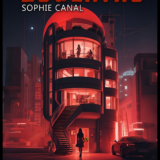Note: I read this book in English. It was translated from the author’s native language. As a translation, there were several grammar issues and ambiguous meanings. At times I had to stop to decipher the author’s meaning. It needs an English-speaking editor’s review.

- File Size: 1878 KB
- Kinde: $4.24
- Print Length: 97 pages
- Simultaneous Device Usage: Unlimited
- Publisher: Acheron Books (December 16, 2014)
- Publication Date: December 16, 2014
- Sold by: Amazon Digital Services LLC
- Language: English
- ASIN: B00R4N91C4
Now, on to the review:
I couldn’t stop reading. I read this in one sitting.
Augusto Ghites is a private investigator with a strange penchant for reviewing cases involving the dead. He won’t deal with the living, won’t find missing persons, and won’t deal with any case where he could be hurt. He’s psychic, with a peculiar method for communicating with the dead … he must ingest their ashes. His drug of choice, the ashes, is no less addictive than heroin. He feels he can do without it, yet he doesn’t want to give up the rush the ashes give him.
Ghites is hired by former prostitute Mrs. Lupano to find the murderer of her friend and colleague, a whore named Nana, who was killed gruesomely sixty years ago. Nana had been born into a wealthy family, but she began a life of prostitution at a young age. After a few years, she was admitted to a mental hospital, where she met Professor Carcano and the two developed a bond. Upon investigation, Ghites realizes that the professor carries a dark secret, making him a prime suspect in Ghites’s book. However, was the secret the Professor held one of murdering Nana, or was it something else?
Ghites takes along a friend with him, the dead Jim Morrison of the Doors, referred to frequently in the novel as Mr. Mojo. In order to communicate with him, Ghites periodically ingests Morrison’s ashes. Sprinkled throughout the text are several of Morrison’s lyrics.
An acquaintance, his ashes dealer Topaz, is a hindrance to his investigation, siccing mobsters who want to kill on Ghites’s trail.
Near the end we find out “whodunit.” Even after the killer is revealed, however, the story is far from over. One character other than Ghites has a perverted obsession with the dead.
Marolla’s descriptions of Milan in 1953 and in 2013 are vivid and detailed, making us feel as if we are there with Ghites. I felt there was too much detail, however. The story itself seemed to be secondary to the beautiful descriptions of the locations, ghosts, and cemeteries.
I enjoyed the book, although, as I said in the note above, I was taken out of the story several times due to the translation errors.










